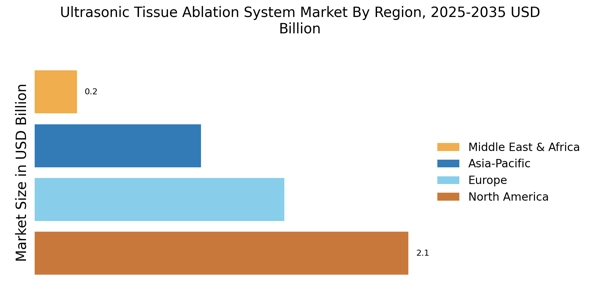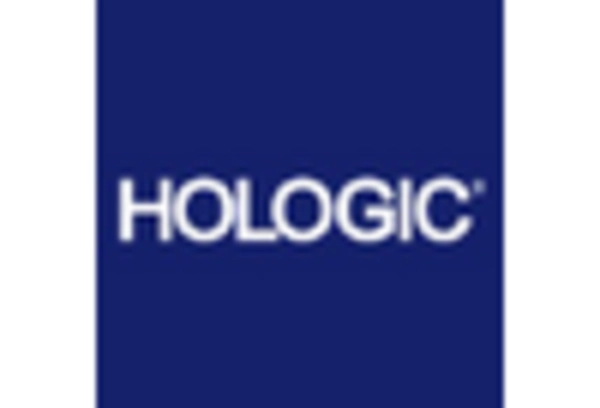Supportive Regulatory Environment
The Ultrasonic Tissue Ablation System Market benefits from a supportive regulatory environment that encourages innovation and the introduction of new technologies. Regulatory bodies are increasingly recognizing the advantages of ultrasonic ablation systems, leading to streamlined approval processes for new devices. This regulatory support is crucial for manufacturers aiming to bring advanced products to market quickly. As a result, the market is likely to see a rise in new entrants and innovative solutions, fostering competition and driving growth. The anticipated regulatory changes may further enhance the market landscape, potentially increasing the availability of cutting-edge ultrasonic tissue ablation systems.
Increased Focus on Patient Safety and Outcomes
The Ultrasonic Tissue Ablation System Market is increasingly prioritizing patient safety and improved clinical outcomes. As healthcare systems worldwide emphasize quality of care, the demand for technologies that enhance patient safety is rising. Ultrasonic tissue ablation systems are designed to minimize complications and improve recovery times, aligning with the broader healthcare trend towards patient-centered care. This focus is reflected in the growing adoption of these systems in surgical practices, with a reported increase in their use by approximately 20% in recent years. Enhanced safety profiles and better patient outcomes are likely to drive further investment in ultrasonic technologies, thereby propelling market growth.
Rising Demand for Minimally Invasive Procedures
The Ultrasonic Tissue Ablation System Market is witnessing a notable increase in demand for minimally invasive surgical procedures. Patients and healthcare providers alike are gravitating towards techniques that reduce recovery time and minimize surgical trauma. Ultrasonic tissue ablation offers a less invasive alternative to traditional surgical methods, which is appealing to both patients seeking quicker recovery and surgeons aiming for improved procedural efficiency. As a result, the market is expected to expand significantly, with estimates suggesting a potential increase in market size by over 15% in the coming years. This trend is further supported by the growing awareness of the benefits associated with minimally invasive techniques, including reduced postoperative pain and shorter hospital stays.
Expanding Applications in Various Medical Fields
The Ultrasonic Tissue Ablation System Market is diversifying as applications expand across various medical fields, including oncology, cardiology, and gynecology. The versatility of ultrasonic ablation technology allows it to be utilized for a range of procedures, from tumor ablation to cardiac arrhythmia treatment. This broad applicability is likely to attract a wider range of healthcare providers, thereby increasing market penetration. Recent studies indicate that the use of ultrasonic tissue ablation in oncology has grown by approximately 30% due to its effectiveness in targeting tumors with minimal collateral damage. As more specialties adopt this technology, the market is poised for substantial growth.
Technological Advancements in Ultrasonic Tissue Ablation
The Ultrasonic Tissue Ablation System Market is experiencing a surge in technological advancements that enhance the efficacy and precision of tissue ablation procedures. Innovations such as high-frequency ultrasound devices and improved imaging techniques are being integrated into ablation systems, allowing for more accurate targeting of tissues. This not only minimizes damage to surrounding healthy tissues but also improves patient outcomes. The market is projected to grow at a compound annual growth rate (CAGR) of approximately 8% over the next five years, driven by these advancements. Furthermore, the development of portable and user-friendly devices is likely to expand the accessibility of ultrasonic tissue ablation, making it a preferred choice among healthcare providers.


















Leave a Comment